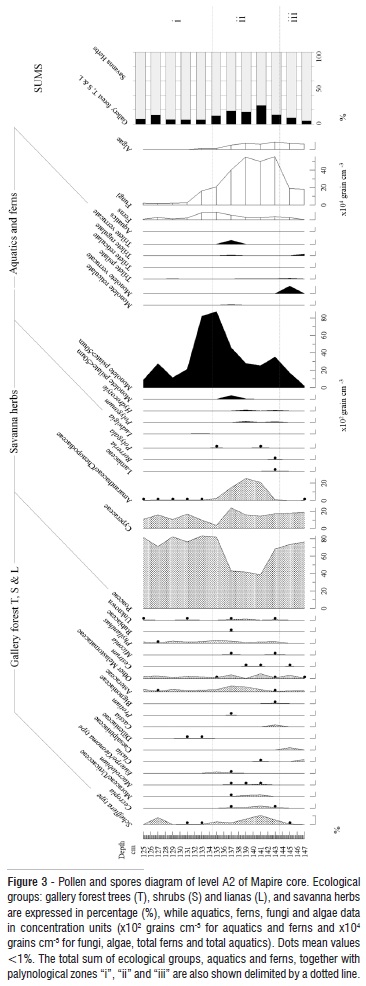A palynological analysis of an organic paleosol found at 150-125 cm depth in a Mauritia swamp from the Eastern Orinoco Llanos is presented. The 25 cm pollen record summarizes the vegetation history during the Early Holocene, from 10,225 to 7,800 calendar yr BP. The vegetation was characterized by a Poaceae marsh, where Asteraceae, Melastomataceae, Schefflera-type and Phyllanthus were the most abundant shrubs and trees. Pollen-types richness was lower than that recorded today in similar environments, and Mauritia pollen was absent. Results suggest that climate was as humid as present during the beginning of the Holocene, with a decreasing trend in humidity from around 8,000-7,000 yr BP, in coincidence with the beginning of the "Early-Mid-Holocene Dryness" that affected deeply the Amazon Basin and neighboring areas. Dry climatic conditions could have existed in the study site until the Mid-Late Holocene when a Mauritia swamp developed, and humid conditions similar to present established. Main climate phases inferred in our study site fit well with regional trends recorded in other places located north Amazon Basin. However, conclusions are still limited by the lack of additional Quaternary records in the Orinoco Llanos area, avoiding regional correlations.
Orinoco Llanos; Mauritia swamp; Early Holocene; paleoclimate; Early-Mid Holocene Dryness





